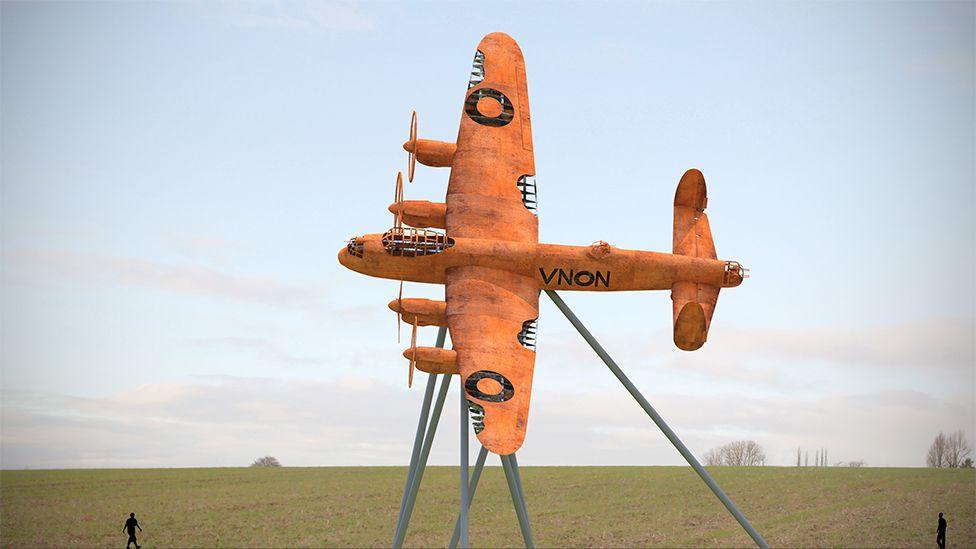The Lancaster Bomber Sculpture: A Tribute to Heroism

Introduction
The Lancaster Bomber sculpture stands as a profound symbol of bravery and resilience, commemorating the heroic efforts of those who served in the Royal Air Force during World War II. As a significant piece of public art, it not only celebrates the iconic aircraft but also serves as a reminder of the sacrifices made during wartime. This particular sculpture has garnered attention in various communities, fostering remembrance and understanding of the essential role played by the Lancaster bombers in securing peace.
Main Body
The Lancaster Bomber was a British heavy bomber used extensively during World War II, famed for its role in night raids and precision strikes against enemy targets. With a wingspan of over 31 meters and capable of carrying up to 14,000 pounds of bombs, these aircraft became a crucial part of the Allies’ strategic bombing campaign. The sculpture, created by renowned artist David Annand, was unveiled in a ceremony attended by veterans, families, and members of the public in 2021 in Lincoln, the home of the famous Bomber Command.
The Lancaster Bomber sculpture depicts the aircraft in mid-flight, capturing its majestic form and instilling a sense of awe. Made from bronze and steel, the sculpture is detailed down to the rivets, reflecting the craftsmanship of these historic machines. Surrounding the sculpture, a beautifully landscaped area featuring plaques with stories of bravery and excerpts from wartime letters enhances the educational impact of the piece. This offers visitors a contemplative space to reflect on the courage of those who served.
Moreover, the sculpture serves an important educational purpose. Schools and groups are encouraged to visit, providing a chance to learn about the history and significance of the Lancaster Bomber and its integral role in the war effort. The recent rise in visitor numbers also reflects a growing interest in military history and honouring the past, especially as generations seek to understand the sacrifices made for their freedom.
Conclusion
The Lancaster Bomber sculpture is more than just a tribute to a historic aircraft; it is a testament to the bravery and commitment of those who served. As communities continue to gather around this symbol of heroism, it reinforces the importance of remembering the past and educating future generations. Forecasts suggest that public art initiatives like this will grow in importance as they foster community engagement and remembrance. As we face modern challenges, reflections on history through sculptures like the Lancaster Bomber serve to inspire and remind us of our shared responsibilities toward peace and understanding.
